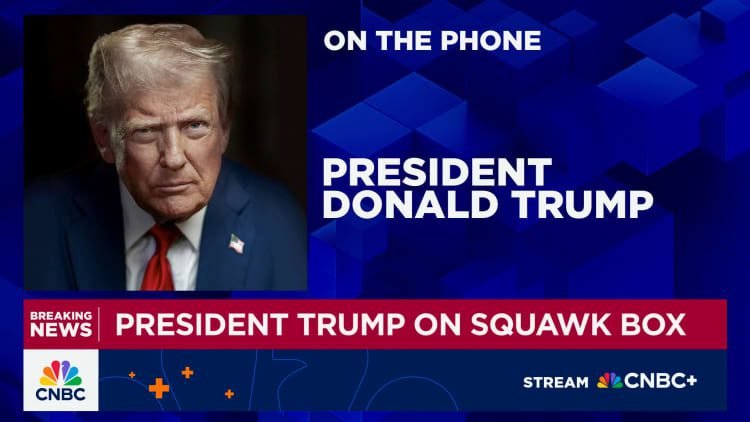President Trump’s Trade Strategy: Investments and Tariffs
U.S. President Donald Trump has a distinctive approach to communication, especially regarding his administration’s trade policies. Recently, he has drawn parallels between sports and economics, using metaphors that resonate with a broader audience. His focus on trade agreements with nations like Japan and members of the European Union emphasizes significant financial commitments aimed at bolstering the U.S. economy.
Bringing Sports Metaphors into Trade Talks
In a recent conversation with a news outlet, Trump likened substantial foreign investments in the U.S. to the signing bonuses that athletes receive when they join new teams. This analogy allows him to frame the financial influx as advantageous for American interests. Specifically, Trump cited a staggering $550 billion investment from Japan, indicating this figure could be seen as a bonus for the U.S., much like a lucrative signing deal in professional sports.
“We’re bringing in trillions of dollars,” he stated, emphasizing that American consumers are benefitting from favorable trade practices, including tariffs. According to Trump, the implementation of tariffs is a popular move among U.S. citizens because it yields economic gains, resulting in fairer trading conditions.
The EU’s Commitment to U.S. Energy
In addition to Japan’s commitment, the President highlighted the European Union’s promise to invest $600 billion in the United States and purchase $750 billion worth of American energy by 2028. Such agreements point to a mutual understanding that both sides benefit from these economic exchanges.
When questioned about the specifics of this investment, Trump reassured them that he has freedom over how these funds will be allocated, reinforcing the notion that this money is not merely a loan, but rather an unrestricted financial asset designed to enhance U.S. industries.
Trade Agreements and Tariff Reductions
The trade agreement established in July between the U.S. and the European Union included a reduction of import tariffs to 15%. This move underscores a significant shift aimed at fostering better economic relationships. These developments come at a time when nations are notoriously protective of their industries, making the lowering of tariffs particularly crucial for mutual benefit.
In an interesting exchange during the interview, Trump noted that representatives from other nations were puzzled why the EU seemed to receive more favorable tariff rates. His response framed the lower tariffs as a direct outcome of the $600 billion investment, underscoring that this was a generous offering from the EU, not a debt to be settled.
Investments in Core American Industries
As part of these trade discussions, Trump has emphasized a strategic focus on revitalizing America’s core industrial sectors. The funds from both Japan and the EU are earmarked for various industries, including energy infrastructure, semiconductor manufacturing, and medical production. This sector-specific investment aims to reduce the United States’ dependency on foreign goods and encourage domestic production.
By investing in these critical areas, the administration aims to ensure that American businesses can compete effectively on a global scale while bolstering the nation’s economic resilience. The plan also includes a commitment to rebuild and expand manufacturing capabilities, which can significantly benefit the American workforce.
The Future of U.S. Trade
As these trade deals unfold, the underlying theme remains clear: the administration is intent on recalibrating international trade dynamics in favor of American interests. By securing investments that can transform and strengthen critical industries, the administration positions itself to create a robust economic landscape.
Through strategic negotiations and bold commitments from major global partners, Trump’s administration aims to leave a lasting impact on the economic framework of the United States, ensuring that the benefits of these trade agreements reach the American populace.
In summary, President Trump’s unique way of portraying trade agreements through sports metaphors highlights the significant investments from countries like Japan and the European Union. By focusing on domestic revitalization and removing barriers, his administration seeks to foster an environment where American industries can thrive.
